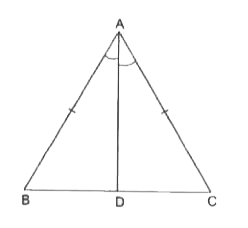Prove that the circle drawn on any one of the equal sides of an isosceles triangle as diameter bisects the base.
Video Solution
Text Solution
The correct Answer is:NA
NA
|
Topper's Solved these Questions
- CIRCLE Book:NAGEEN PRAKASHANChapter:CIRCLE Exercise:Exercise 10c
Explore 20 Videos
- CIRCLE Book:NAGEEN PRAKASHANChapter:CIRCLE Exercise:Revision Exercise (very Short Answer Question)
Explore 10 Videos
- CIRCLE Book:NAGEEN PRAKASHANChapter:CIRCLE Exercise:Exercise 10a
Explore 22 Videos
- AREA OF PARALLELOGRAMS AND TRIANGLESBook:NAGEEN PRAKASHANChapter:AREA OF PARALLELOGRAMS AND TRIANGLESExercise:Revision Exercise (long Answer Question)
Explore 5 Videos
- CO-ORDINATE GEOMETRY Book:NAGEEN PRAKASHANChapter:CO-ORDINATE GEOMETRY Exercise:Exercise
Explore 8 Videos
Similar Questions
Knowledge Check
Each of the equal sides of an isosceles triangle is 13 cm and its base is 24 cm. The area of the triangle is
A156 cm2B78 cm2C60 cm2D120 cm2Each of equal sides of an isosceles triangle is 13 cm. If the length of base is 24 cm then its area is
A50cm2B60cm2C55cm2D65cm2
Prove that the perpendiculars drawn from the vertices of equal angles of an isosceles triangle to the opposite sides are equal.
View SolutionFind the area of an isosceles triangle having the base x cm and one side y cm
View SolutionProve that the bisector of the vertical angle of an isosceles triangle bisects the base at right angles.

View SolutionProve using vectors: The median to the base of an isosceles triangle is perpendicular to the base.
View Solutionprove that the circle drawn on any focal distance as diameter touches the auxiliary circle in an ellipse
View SolutionProve that the circle drawn with any side of a rhombus as a diameter, posses through the point of intersection of its diagonals.
View Solution